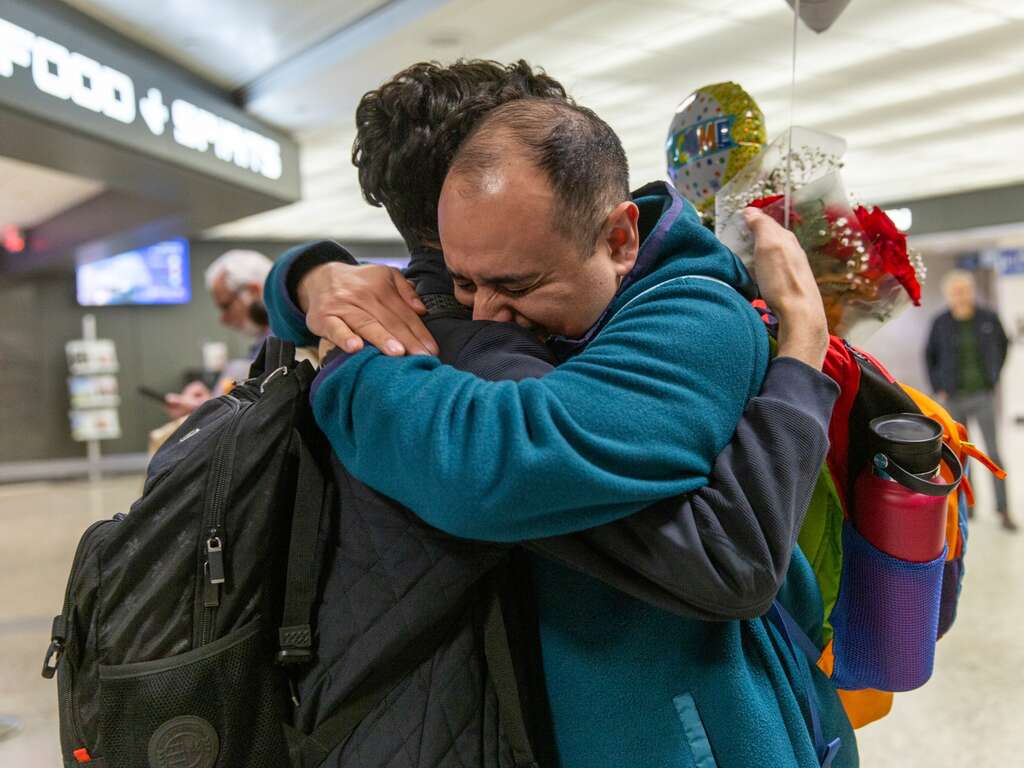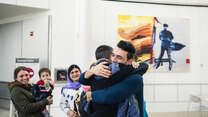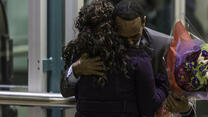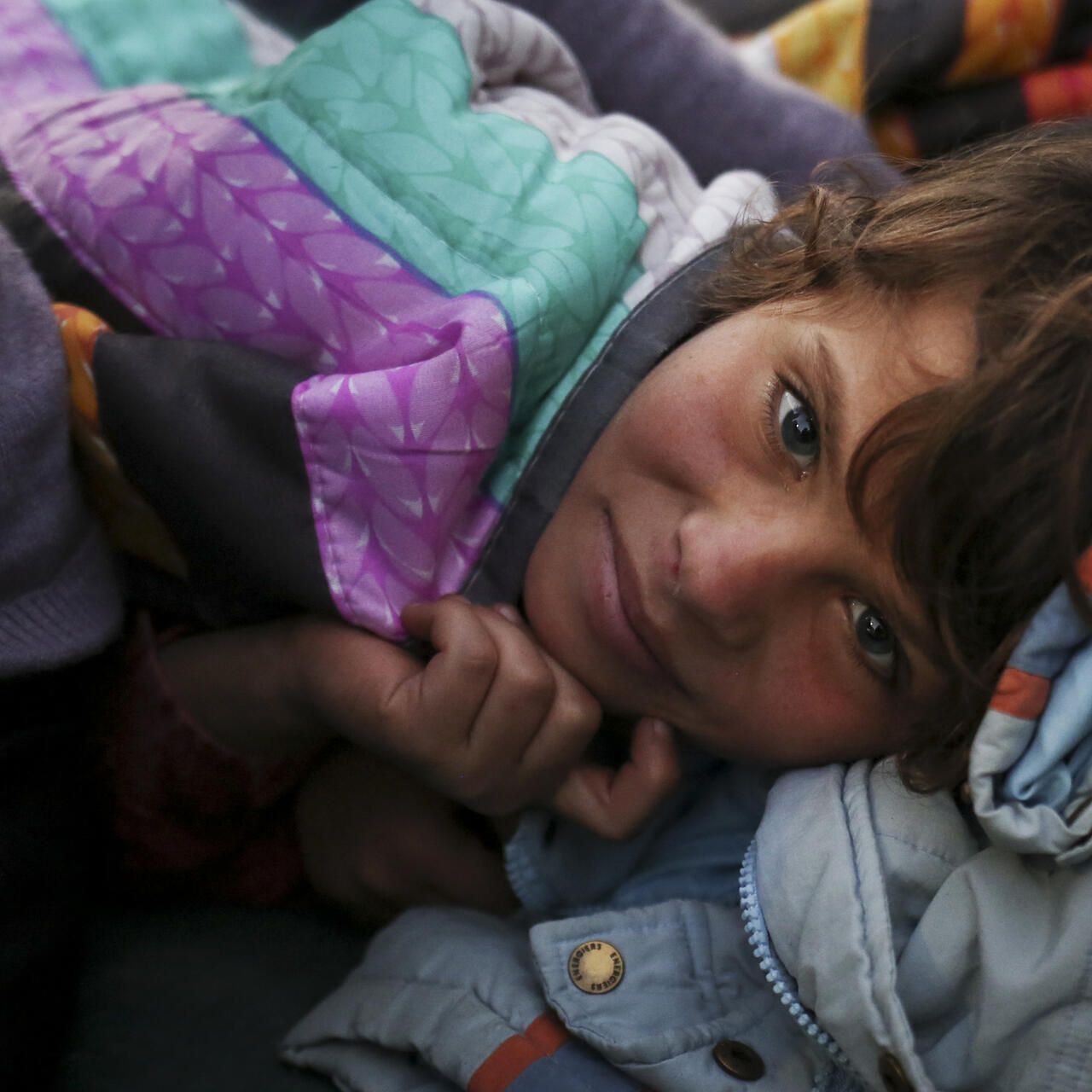
Editor's note, 2025: For information about Trump's latest 2025 travel ban, read our latest article.
The United States has historically welcomed refugees fleeing war and persecution, and given them a chance to rebuild their lives in safety. The Trump Administration’s executive orders on refugee travel, however, have hindered these efforts.
While the Trump travel ban officially expired on Oct. 24, it isn’t over. Arbitrary new vetting measures effectively extend the ban for 90 days for refugees from 11 countries. These procedures will lengthen the resettlement process for thousands of people escaping violence and conflict.
President Trump first instated the travel ban on Jan. 27—his first week in office. This executive order suspended the entire refugee resettlement program for 120 days and barred refugees fleeing the war in Syria from entry to the U.S. indefinitely. It also barred entry to refugees from six other countries—Iraq, Iran, Sudan, Libya, Somalia and Yemen—for 90 days. The order resulted in chaos at airports across the country as refugees who were already in the air were detained and, in some cases, sent back to the crises they had fled.
After the travel ban was hit by a barrage of legal opposition and challenged in federal courts, President Trump issued a revised order on Mar. 6. This new order excluded restrictions on travelers who hold green cards in the U.S. It also removed Iraq from the list of countries affected by the ban, and it removed the indefinite ban on Syrian refugees.
A Pakistani family is to arrive in the US next week as refugees with an IRC tie. Will they be allowed to stay? https://t.co/3Beqsc3eUppic.twitter.com/Vfm60suJbO
— IRC Intl Rescue Comm (@theIRC) June 29, 2017
This second travel ban was also challenged in federal courts. On Jun. 26, however, the Supreme Court put a partial stay on the rulings against the travel ban, effectively reinstating the order and immediately impacting already vetted refugees scheduled to come to the United States.
The Trump Administration followed this decision with new guidelines on the travel ban, stipulating that people who have a "credible claim of bona fide relationship" with an entity or person living in the U.S. can enter the country. These arbitrary guidelines raise more questions than answers. For example, travelers with a child or parent will be allowed entry; those with a grandchild or grandparent will not.
This limited travel ban went into effect on July 13, leaving thousands of vulnerable refugees who were not already on flights to the United States stranded. It was challenged the same day by a federal judge in Hawaii who ordered the Trump administration to expand the number of people who are exempt from the travel ban to include grandparents and other relatives, as well as refugees without family ties to the U.S.
Courts narrowed the scope even further on Sept. 7, ruling that there is a bona fide relationship between a resettlement agency and a refugee. But on Sep 12, the Supreme Court temporarily allowed the Trump administration to stop refugees from entering the U.S. ahead of plans to hear arguments on the lawfulness of the travel ban on Oct. 10. These hearings were later cancelled as the Oct. 24 expiration date for the 120-day travel ban period approached, rendering the case moot.
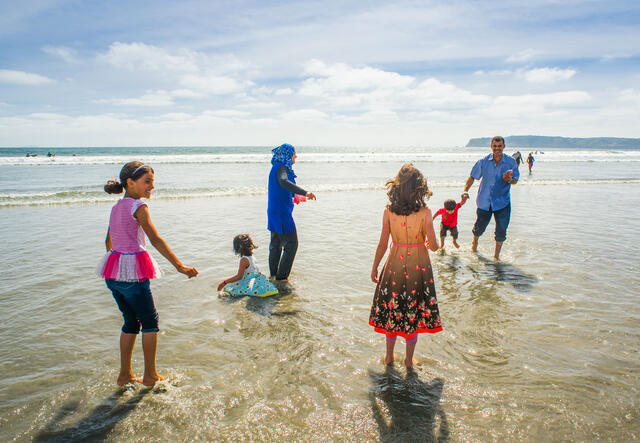
The ban came at a time when more people are uprooted by violence than at any time since World War II—leaving innocent lives in danger or adrift.
“Legal uncertainty must not obscure that a ban on refugees is both bad and unnecessary policy,” said David Miliband, President and CEO of the International Rescue Committee (IRC) said in January. “We should look no further than the last six months as proof: the current system works well. It is harder to get to the U.S. as a refugee than through any other route, so this ban remains wholly unnecessary.”
IRC resettlement and policy experts have answered some of the questions you may have about the executive order:
What is the 2017 travel ban?
The travel ban is an executive order signed by President Donald Trump on Jan. 27 and revised on Mar. 6. It suspended the entire refugee resettlement program for 120 days and barred entry to refugees from six countries – Syria, Iran, Sudan, Libya, Somalia and Yemen – for 90 days. Iraq was removed from the list in March.
Is the travel ban over?
No. It expired on Oct 24, but new vetting procedures introduced by the Trump administration continue to thwart the resettlement process for refugees living in dire situations.
According to Reuters, these new processes will “determine what additional safeguards, if any, were necessary to ensure that the admission of refugees from these countries of concern does not pose a threat to the security and welfare of the United States.” For example, refugees will need to provide additional information such as addresses, phone numbers and email addresses for themselves and potentially their family members
Why did the White House want to halt refugee resettlement for 120 days in 2017?
The Trump administration has an unfounded belief that there is no proper security screening for refugees. It said it needed four months to review existing security procedures.
But aren’t refugees already extremely vetted?
Yes. Refugees are the most thoroughly vetted group to enter the U.S. The resettlement process can last anywhere from 18-24 months after rigorous vetting by over a dozen federal agencies.
A reminder of how the U.S. refugee vetting & resettlement process really works: https://t.co/mjMd8XzCo2#StandWithRefugees#RefugeesWelcomepic.twitter.com/RBASDGxjUg
— IRC Intl Rescue Comm (@theIRC) June 28, 2017
Refugees undergo biographic and biometric checks, medical screenings, forensic document testing, and in-person interviews. Syrian refugees must go through an additional layer of screening.
Who is exempt from the travel ban?
People who have a "credible claim of bona fide relationship" with an entity or person in the U.S. are exempt from the travel ban.
U.S. citizens and legal residents, such as green card holders and visa holders, are also exempt from the travel ban.
Who is considered to have a “bona fide relationship” with a person under the Trump administration’s guidelines? Who is not?
On Sept. 7, a federal appeals court ruled travelers with not only a close family relationship—child, spouse, parent, mother-in-law, father-in-law, son-in-law, daughter-in-law, sibling or half sibling—but also other relatives such as aunts, uncles and cousins will be allowed entry into the U.S. But the Supreme Court reversed this ruling a few days later.
Out of 2,500 people the IRC was scheduled to resettle in 2017, roughly 1,950 do not meet the arbitrary definitions imposed by the administration—either because they do not possess U.S. ties or because they do not meet a near-nuclear family definition.
The banning of grandmothers—of unaccompanied children—from America’s shores is a disgrace.
Resettlement agencies like the IRC partner with the U.S. State Department and the U.S. government, which handpick and vet refugees to be matched with these agencies. This rigorous process can take up to two years.
As the travel ban took effect, the IRC urged the administration to speak about the legal justifications for their interpretation, and to provide additional guidance to resettlement agencies.
In his July 13 ruling, Judge Derrick Watson of Hawaii not only loosened the travel ban restrictions to exempt grandparents and other relatives but ordered the Trump administration to admit refugees without family ties in the U.S. who had an assurance from a resettlement agency.
"An assurance from a United States refugee resettlement agency, in fact, meets each of the Supreme Court's touchstones: it is formal, it is a documented contract, it is binding, it triggers responsibilities and obligations, including compensation, it is issued specific to an individual refugee only when that refugee has been approved for entry by the Department of Homeland Security, and it is issued in the ordinary course, and historically has been for decades," Watson explained. "Bona fide does not get any more bona fide than that."
Why has the travel ban been challenged in multiple federal courts?
The travel ban has been challenged in multiple federal courts because it is seen as blatantly unconstitutional and it discriminates against people based on their religion and nationality. It was also hastily issued without any input from government bodies—such as the Department of Homeland Security and the Department of State—that oversee immigrant and refugee travel.
What did the Supreme Court's decision to hear the travel ban case in the fall—while partly reinstating the ban—mean for refugees?
The implementation of a partial stay by the Supreme Court on rulings against the Trump administration’s travel ban immediately impacts already vetted refugees scheduled to come to the United States.
This will have a disastrous impact on refugees. The IRC is gravely concerned about the humanitarian consequences, and the policy consequences, of the decision reinstate the administration’s travel ban.
We’ve seen some of the dire impacts of this policy in action: urgent medical conditions blocked, innocent people left in unimaginable circumstances. The ban remains a counterproductive measure: coming to the United States as a refugee is, by far, the most difficult route an individual can take. This is a system strengthened by successive presidential administrations, both republican and democratic. Slamming the door puts innocent lives at risk and does nothing to make us safer.
“The Court’s decision threatens damage to vulnerable people waiting to come to the U.S.,” said IRC president David Miliband.
How many refugees does the U.S. take in each year compared to other countries?
The U.S. is just one of 28 resettlement countries. Out of the nearly 20 million refugees in the world, less than 1 percent are considered for resettlement worldwide. Only a fraction of that 1 percent is invited to resettle in the United States.
How many refugees were to be admitted in 2017?
The lowest number in a decade: Although the U.S. was scheduled to admit up to 110,000 refugees in fiscal year 2017, the Administration slashed that number to 50,000. The fiscal year for resettlement ended in September.
How many refugees will be admitted in 2018?
President Trump set a cap of 45,000 for fiscal year 2018.
How many people will the travel ban affect?
The Trump Administration policy will exacerbate the suffering of an estimated 60,000 vulnerable refugees who have been security vetted and are awaiting resettlement to the U.S.
Some 65 million people are currently displaced around the world. We are facing the most serious displacement crisis we’ve known since World War II.
For example, after six years of war in Syria, its neighbors can no longer absorb more refugees. The need for resettlement in safe third states is more necessary than ever— so President Trump’s refugee policies will affect the lives of the few given this chance in the U.S.
What will happen to refugees already approved for resettlement who haven't yet arrived?
The impact of cancelling refugees’ journeys to the U.S. is life and death for those with urgent medical conditions. It is acutely dangerous for refugee children who are on their own; it derails the progress of young refugee families who have quit jobs and vacated apartments in the countries where they found temporary asylum, all while pursuing better lives for their children through resettlement.
The temporary halt in the resettlement program may force refugees who already went through the rigorous screening process and who were set to arrive in the U.S. soon to instead wait months and even years to go through fingerprinting, interviews, health screenings, and multiple security checks all over again, all while their lives are in danger.
In addition, the travel ban is harmful to resettlement agencies who have made extensive preparations, financial and otherwise, for refugees who were expected to arrive.
What does the 2017 travel ban mean for refugees already in the U.S.?
Refugees already in the U.S. who have been waiting to be reunited with family members still in danger may never have that opportunity, or their reunion may be delayed for months or years. The Supreme Court ruling on Jun. 26, however, stipulates that those with a "credible claim of bona fide relationship" with an entity or person living in the U.S. may be admitted. For instance, step-siblings and half-siblings will be admitted, but nieces and nephews will not.
Why did the travel ban name Syrian refugees, specifically?
On the campaign trail and now in the White House, Trump has made unfounded claims that refugees from war-torn Syria are a security threat. He has called them “a Trojan Horse” that would make America vulnerable to terrorism.
In fact, refugees coming to the U.S. are fleeing the same violent extremism that the U.S. and its allies are fighting in the Middle East and elsewhere. Based on recent data, the majority of those selected for resettlement in America are women and children.
Approximately 10,000 of the refugees who arrived in the U.S. in 2016 were from Syria. Syrian refugees must already go through an additional layer of screening on top of the already-rigorous vetting all refugees go through. This "enhanced review" process creates extra review steps with intelligence agencies and Department of Homeland Security officers who have particular expertise and training in conditions in Syria and the Middle East.
These additional reviews must take place before the refugee officer conducts the final in-person interview. This means that not only is there an extra layer of scrutiny—which the government believes is necessary because of the complexity of the conflict in Syria—but the process may also take longer due to this extra step.
This enhanced review makes it even more difficult for those who would do America harm to get through, while making it a more arduous process for all of the innocent refugees.
Are other countries part of the ban?
The original travel ban executive order barred both citizens and refugees from six Muslim-majority countries that have been linked to concerns about terrorism from entry into the United States for 90 days. The countries originally included in the ban were Iraq, Syria, Iran, Sudan, Libya, Somalia and Yemen. Iraq, however, was removed from the list in May 2017.
New guidelines issued in September effectively extend the ban for people from 11 countries, which the Trump administration did not name.
The president has talked about a “Muslim ban.” Is that in his refugee policies?
This question is central to some of the legal challenges that faced the travel ban.
The original executive order indicated that the U.S. will prioritize religious minorities over all other refugees. Barring refugees from certain countries like Syria and showing a narrow preference for religious minorities is tantamount to a Muslim ban.
What about refugees who have helped the U.S. military?
There are thousands of Iraqis and Afghans whose lives are at risk because of the assistance they offered U.S. troops stationed in their countries. This Special Immigrant Visa (SIV) population makes up one quarter of all the refugees the IRC would be resettling this year.
Among those with SIV status who arrived shortly after the first executive order was signed was an Iraqi interpreter who had worked for the U.S. Army for a decade. He was separated from his wife and children and detained at JFK airport in New York until a federal judge ordered his release on Jan. 28 following the ACLU suit.
What's wrong with barring refugees from certain countries or religions if it makes us feel safer?
These bans fly in the face of America’s best values of freedom, fairness, and compassion, and they represent an abandonment of America’s role as a humanitarian leader.
By relinquishing its responsibility to some of the world’s most vulnerable people, the U.S. forgoes its moral authority to call upon Europe as well as poorer countries to provide shelter.
Will the refugee ban make America safer?
No. According to the Cato Institute, the chances are one in 3.6 billion that a U.S. citizen will be killed by a refugee; an American is more likely to be killed by lightning than by a terrorist attack executed by a foreigner.
Refugees are already the most vetted group to enter the U.S. and the bans outlined in the executive order will not improve national security.
Chances of being killed by a refugee in the US = 1 in 3.64 BILLION. Lightning is more dangerous. RT to spread the facts. #StandWithRefugeespic.twitter.com/M1rVrjF0D3
— IRC Intl Rescue Comm (@theIRC) June 30, 2017
In fact, barring certain groups from entry because of their religion or country of origin could have the opposite effect: Far from protecting America from extremism, a ban on Syrian and Muslim refugees is a propaganda gift to those who would plot harm to the U.S.
Also, we must remember that support for refugees is not charity; it is a contribution to the global stability on which all countries depend. In fact, evidence shows that refugees are good for the economies that host them.
What comes next?
The IRC is calling on the Trump Administration to learn about who refugees are, and the dismal situations that require this life-saving resettlement program—including the violence that has forced over 600,000 Rohingya refugees out of Myanmar in recent months.
Resettlement is a critical system established in its current form by the Reagan administration, and strengthened by both Democratic and Republican administrations afterward.
“The human toll on families who have patiently waited their turn, done the vetting, given up jobs and prepared to travel is wrong," said IRC president David Miliband in a July 13 statement. "After decades of leading with its gold standard resettlement program, this defective policy shifts the goal posts and sees America turn its back on— and break its promise to— the world’s most vulnerable.”
What can I do to fight the ban?
We need your help to fight back and remind Congress that the Trump Administration’s refugee policies DO NOT represent American values. Take action.
How else can I help refugees?
Make a donation today to support the International Rescue Committee in our work helping refugee families in the U.S. and around the world to survive and rebuild their lives.
Here are some more ways to help refugees in the U.S. right now.
